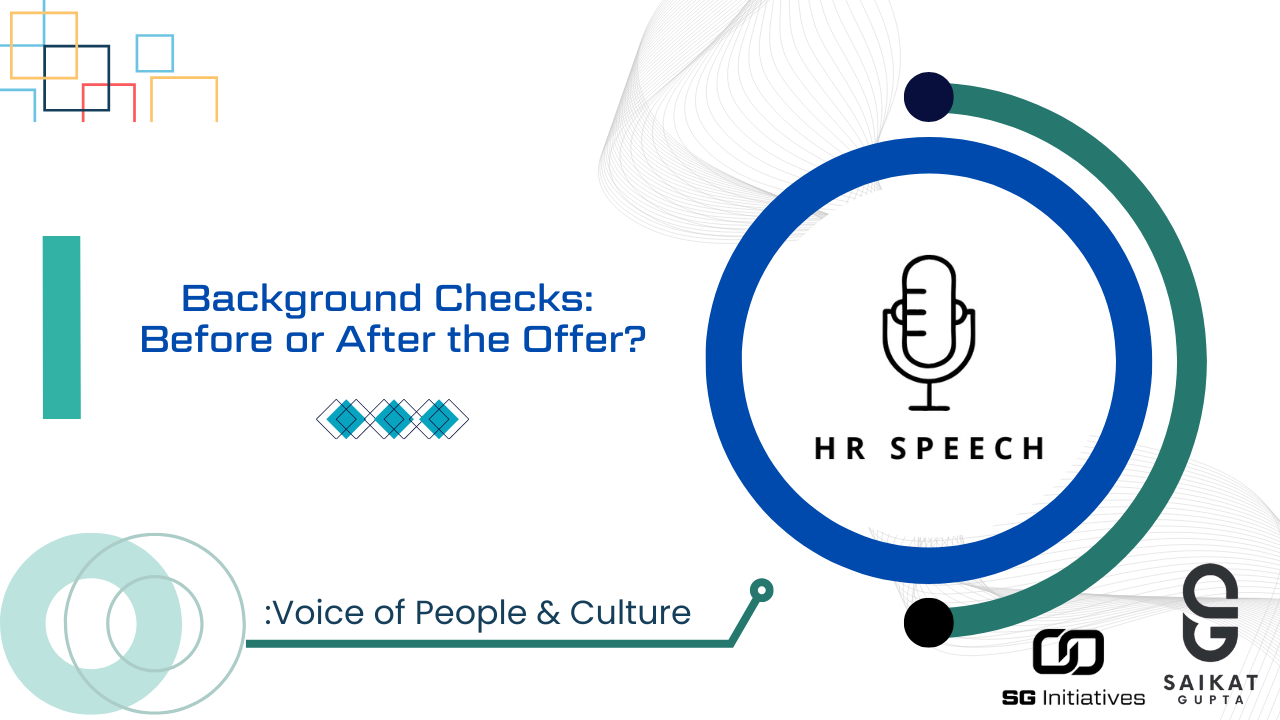
In the modern corporate landscape, Background Verification (BGV) has become a critical element of the hiring process. However, one frequently debated topic among HR professionals and hiring managers is the timing of this verification — should it be conducted before issuing the offer or after?
This article dives deep into the pros and cons of both approaches, bolstered by real-time industry statistics, case studies, and practices, with a particular focus on the IT industry, followed by insights from other sectors.
What is Background Verification?
Background Verification refers to the process of validating the credentials, history, and identity of a job candidate. This usually includes:
- Educational Qualifications
- Employment History
- Criminal Records
- Credit Checks (for certain roles)
- Identity and Address Proof
- Professional References
Two Common Approaches to Background Verification
1. Pre-Offer Background Verification
- Conducted before issuing an offer letter.
- Typically done for high-stakes roles (senior executives, legal, compliance).
- Allows early filtration of false profiles.
2. Post-Offer Background Verification
- Conducted after issuing the offer letter but before the joining date or within a few weeks of onboarding.
- Common in high-volume hiring scenarios like the IT industry.
- Based on a clause in the offer letter: “Offer is subject to successful background verification.”
The IT Industry Perspective
Current Practices in the IT Sector
- According to a 2024 NASSCOM survey, over 85% of Indian IT companies conduct background checks post-offer but pre-joining.
- TCS, Infosys, Wipro, and Accenture follow a Post-Offer, Pre-Joining model for most roles, while Pre-Offer checks are reserved for C-Suite or critical project hires.
- A report by First Advantage (2023) states:
Why Post-Offer Verification is Preferred in IT:
- Time Efficiency: IT companies often recruit in bulk, verifying every applicant before an offer is not scalable.
- Cost Control: BGV costs average between ₹1,500–₹5,000 per candidate. Screening only selected candidates post-offer reduces spend.
- Recruitment Agility: Speed-to-offer is a competitive advantage in IT; delays can result in lost talent.
Risks Involved:
- High Dropout Rate:If a candidate is found unfit after the offer, it delays projects and leads to an increase in expenses.
- Brand Risk: Failing to catch red flags early can cause reputational damage, especially if clients get involved.
- Client Dependencies: Many IT projects have strict background verification SLA (Service Level Agreements). Failure in compliance may result in penalties.
Other Industries – A Comparative Look
1. Banking, Financial Services & Insurance (BFSI)
- Pre-Offer BGV is more common.
- Due to regulatory compliance (e.g., RBI, SEBI), employers often demand a clean profile before extending an offer.
- A candidate with a history of financial fraud or litigation can’t be considered.
Example: ICICI Bank mandates a minimum 3-year background check before the final HR round.
2. Healthcare
- Given the sensitivity of patient data and the trust involved, pre-offer checks are often mandated.
- Additionally, medical license validity and criminal checks are prerequisites.
3. Education & Government
- Stringent Pre-Offer Background Checks, especially for roles involving minors or public data.
- Document verification is often part of the application process itself.
4. Startup & SME
- Often delay or skip the comprehensive BGV due to cost.
- When conducted, mostly post-offer.
Pros and Cons of Each Approach
Pre-Offer BGV: Pros
- Better compliance with sensitive roles.
- Protects organisational reputation.
- Prevents unqualified hires from proceeding.
Pre-Offer BGV: Cons
- Slows down the hiring pipeline.
- Increased cost.
- It may deter good candidates with longer wait times.
Post-Offer BGV: Pros
- Faster time-to-offer.
- Cost-effective.
- Good for high-volume hiring.
Post-Offer BGV: Cons
- Risk of backfilling if the candidate fails verification.
- Impacts business continuity for client-facing roles.
- Creates legal complexity if the offer needs withdrawal.
Hybrid Approach: The Emerging Trend
Modern companies are now adopting a risk-based or hybrid model:
- Critical or compliance-heavy roles: Pre-Offer verification.
- Mid to entry-level roles: Post-offer verification.
- High-risk flags in CV (e.g., job hopping, missing documents): Trigger earlier checks.
Example:
- Cognizant screens freshers post-offer but verifies senior consultants before final salary negotiations.
Legal and Ethical Considerations
- Background checks must comply with:
- Explicit candidate consent is required for all BGV activities.
- Employers must avoid discrimination based on background data unrelated to job performance.
Best Practices for HR Professionals
- Design a tiered BGV strategy: Classify roles based on risk level.
- Include BGV clauses in offer letters: Mention “Offer is subject to successful verification.”
- Build vendor relationships: Tie up with trusted BGV agencies to execute the verification.
- Create internal SLA benchmarks: E.g., BGV to be completed within 20 business days.
- Maintain audit logs and secure storage: Especially critical in audits and legal disputes.
What’s the Right Time?
There is no one-size-fits-all answer. The timing of background verification should be driven by a mix of:
- Industry standards
- Role sensitivity
- Regulatory frameworks
- Cost and scale of hiring
In the IT industry, the current best practice remains Post-Offer BGV, unless dictated otherwise by client contracts or role criticality. In BFSI, healthcare, and education, Pre-Offer BGV remains the norm.
HR professionals must weigh speed vs. risk and cost vs. compliance, and build agile, layered BGV policies that align with business goals.
What do you follow in your organization? Let’s discuss.
© Saikat Gupta
